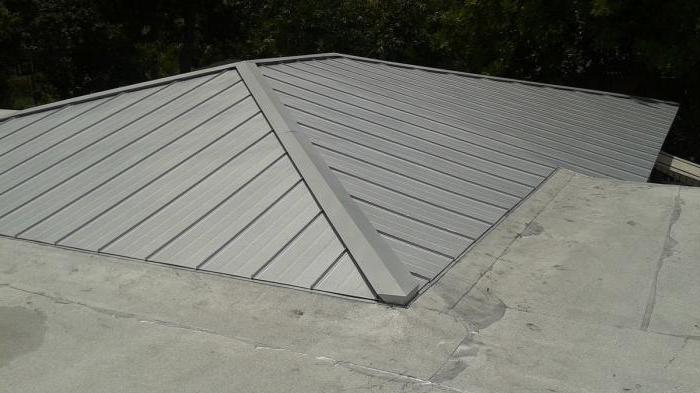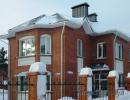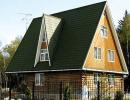Minimum and maximum slope of flat roofs according to snip
In order for the roof to serve for a long time and be safe during the entire period of operation, it is necessary to prepare a quality project in advance. Also, do not forget about the materials, which certainly should not be saved on, so that you do not have to overpay, as in one well-known saying. They should not only correspond to the climatic conditions of residence, but also favorably emphasize the architectural features of a private house. After all, the design has not been canceled! But, in addition, it is necessary to take into account the slope of flat roofs. This is the same important stage as the selection and calculation of rafters, insulation.
The efficiency of roof operation is directly dependent on its slope. And when calculating this parameter, it is necessary to take into account the region of residence, for which exactly the attic is being built and the roofing materials used.
Advantages of flat roofs
Despite the fact that during the construction of private houses, flat roofs are made in isolated cases, they have a number of advantages. And above all - the low cost of work, since a smaller amount of building material is spent in comparison with the construction. Their installation is not as complicated as it might seem. Also, a flat roof is easy to maintain and repair.
If necessary, the roof can act as an additional platform. On it you can arrange a small pool or a children's corner. In addition, a slight slope of flat roofs will allow the installation of any equipment, often air conditioners.
The invaluable advantages of a flat roof make it popular not only abroad, but also in Russia. This is contrary to the seemingly unappealing design. Currently, the inversion type of roof is gaining popularity. But that's not what we're talking about. First you need to understand whether you need to make a bias.
The need for sloped flat roofs
Many buildings are made with a flat roof. However, it is not quite like that and has a slight bias, since this is spelled out in the requirements of SNiP and is dictated by vital necessity. Indeed, in the absence of a slope on the roof, rain or melt water will certainly begin to accumulate over time.

Even if the roof surface is perfectly flat, and there should be no talk of any puddles, reality shows the opposite. Various natural factors come into play:
- wind impact;
- solar radiation;
- precipitation;
- temperature fluctuations, etc.
As a result of all this, over time, the roof begins to deform. Accordingly, places are formed in which moisture and dirt, blown by the wind, begin to accumulate. In the presence of at least some slope of flat roofs, this probability is minimal.
What are the consequences?
It would seem that something terrible can happen because of the water? Everyone knows that it is the basis of the life of all things on earth. However, this element can easily destroy almost anything in many ways.
And since we are talking about water, which usually accumulates on the roof, its chemical composition contains a variety of substances. Here they have a detrimental effect on And in winter, the liquid generally turns into a solid state - this is where a powerful crushing force is hidden! And if there is at least some minimum slope of a flat roof, the worst can be avoided.

Many have noticed how vegetation blooms on the roofs - the wind, along with the sun and water, do their job. And as you know, the root system of plants is a fairly strong organ that can destroy almost any durable material. Over time, of course, but it doesn't get any easier.
Slope designation
All parameters of a flat roof, including the slope, are regulated by document SP 17.13330 SNiP II-26-76, which is called the "Code of Roofing Rules. The roofs" (translated from English the roofs - roofs). This document applies to the design of roofs from almost any material:
- bitumen and roll;
- slate;
- from tiles;
- profiled, galvanized, steel, copper sheet;
- aluminum, zinc-titanium and other similar structures.
The slope of the slope relative to the horizon, called the slope of the roof, can be denoted in different ways. In practice, its value is usually indicated in degrees, which is more convenient.
However, in the documentation you can find the writing of the slope of a flat roof as a percentage. However, there are significant differences between these designations. 1 degree equates to 1.7%. 31 degrees will equal 60%. In this regard, it is important to know such ratios in order not to make mistakes when making calculations.
What should you know?
When making a roof slope, it is worthwhile to clearly understand the purpose of this process. Perhaps protection from the harmful effects of external natural factors is necessary. In some cases, the slope of the roof depends on the architectural features of the surrounding buildings, and there is no desire to stand out strongly against their background. The material used also matters, since each has its own indicators that are acceptable during installation.

But special attention should be paid to At the maximum slope of a flat roof, the roof will perform the function of a sail, which is not good. On the other hand, precipitation will not accumulate on such a roof. Neither a drop of rain nor snow will linger on such a surface for a long time.
The scope of the attic also matters. For the arrangement of the attic, it is better not to do steep slopes. And in any case, financial opportunities also make their own adjustments. If you need to build a roof at an angle of 45 degrees or more, you cannot avoid increasing spending on roofing materials. Depending on this, the value of the slope angle is selected.
The dependence of the roofing material on the degree of slope
In addition to the fact that the device for the slope of a flat roof is directly dependent on the type of material used, this parameter also affects the amount of thermal insulation. If, for example, the slope angle is small, then more thermal insulation will be required, since moisture from the sloping roof is not in a hurry to leave.
For the arrangement of the roof, different materials are used. This includes slate (asbestos-cement, cellulose-bitumen sheets), metal tiles, roofing material and other options. Let's consider the most common.
metal tile
This material has considerable weight when compared with other analogues. Therefore, it is important to correctly calculate the slope of the roof. This is especially critical for areas with frequent and strong winds and hurricanes. In this case, the slope angle should be as low as possible.
If you choose too high a slope of a flat roof, it will swell, which will entail an increase in the load on the supporting structure. As a result, the roof may collapse prematurely. 
As a rule, for such a roof, the optimal slope angle will be 27 degrees. Then the roof will reliably protect the house from moisture. The minimum value is 14 degrees. When using soft material, the slope angle can be reduced to 11 degrees. Only the roof in this case needs additional crate.
Decking
This material is considered the most popular for the construction of the roof. It is lightweight yet strong enough to meet the many requirements of property owners. Installation is not difficult, and you can handle it on your own, with the support of your loved ones.
As for the requirements for the slope of a flat roof, SP 17.13330.2011 (set of rules) allows the construction of a roof from corrugated board with an angle of at least 8 degrees and with a sheathing step of 40 cm (grade H-60, H-75). However, the material grades S-8, S-10, S-20 and S-21 allows a slope angle of not more than 15 degrees. The step of the crate in this case is from 5.0 to 6.5 cm, but sometimes a solid construction is used.
Nevertheless, an indicator of 8 ° is the minimum value that suits the roofs of utility or industrial buildings. Residential buildings have a minimum threshold of 10°. But as for the maximum slope indicator, there are no special restrictions. For this material, it is possible to build roofs even with a slope of 70 °, even with a large angle.

The optimal value of the slope of the flat roof (the norms will be observed) will be 20 °, which will allow snow and water to drain in a timely manner. Then you will not need much large investments, and the roof can be laid in two layers. Due to this, the risk of moisture seepage through the fasteners will be minimized.
Soft roof
Here, too, there are values of the angle of inclination, if we take into account (like roofing material, ondulin) or modern polymer (membrane) products. As a rule, the value of the angle of inclination is in the range of 2-15°. More accurate indicators depend on the number of stacked layers.
If it is necessary to lay a two-layer roof, the angle value is 13-15 °. The slope of the three-layer coating will already be smaller - in the range from 3 to 5 °. When using modern membrane material, the threshold is even lower - only 2-5°.

In other words, the property owner himself chooses the slope of a flat roof; SNiP (building norms and rules) are not violated. However, one should take into account the fact that the roof must withstand loads that are not only temporary, but also permanent. The first includes precipitation depending on the season and their weight, gusts of wind. To the second - this is the mass of the roofing material itself, which acts on the supporting structure.






